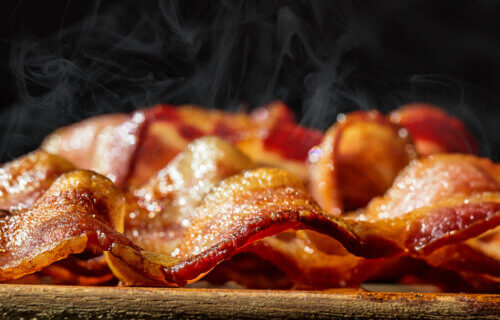Sizzle and pop. What does that bring to mind? Perhaps the juicy, greasy, savory addition to any decadent breakfast plate: bacon! Bacon is a highly flavorful food, with a salty, smoky, and sometimes sweet taste that is often described as irresistible. Its distinct umami-rich flavor comes from the combination of the curing process, smoking, and cooking. With this in mind, what are the best ways to cook bacon?
According to a recent study the scientific quest for a more perfect slice of bacon continues today. Foods like beef jerky, pepperoni, and bacon may be huge favorites, but they aren’t all that good for health because of the curing process. Now, Texas A&M meat scientist Wes Obsurn, Ph.D., is working on a way to make these meats without curing them at all. Conventional curing involves adding sodium nitrite to reduce bacterial growth and preserve the food during the cooking and chilling processes. The problem is that these substances have a long link to cancer. In recent years, meat companies have come out with uncured versions of meats with “no added nitrates or nitrites except those naturally occurring.” Often times, food scientists derive these alternatives from celery. The problem is that you may end up with an undesirable veggie taste in your meat.
Creating healthier cured meats is a global challenge. That being said, research reveals a fast-growing weed in your garden may be the key to making processed meats healthier to eat. Researchers from the University of Reading say using Japanese knotweed reduces the cancer-causing effects of other processed food preservatives like nitrite. Replacing the preservative with natural alternatives however, cuts this cancer-causing connection, putting these meats on the same level as healthier proteins options.
So while the scientific community continues their important work to make a healthy bacon, we can focus on how to cook it. This crispy, hot addition to meals and snacks adds so much incredible flavor that StudyFinds needed to discover all the best ways to cook bacon. This list only contains the top five methods for makin’ bacon, so let us know your favorite way to cook it up in the comments below!
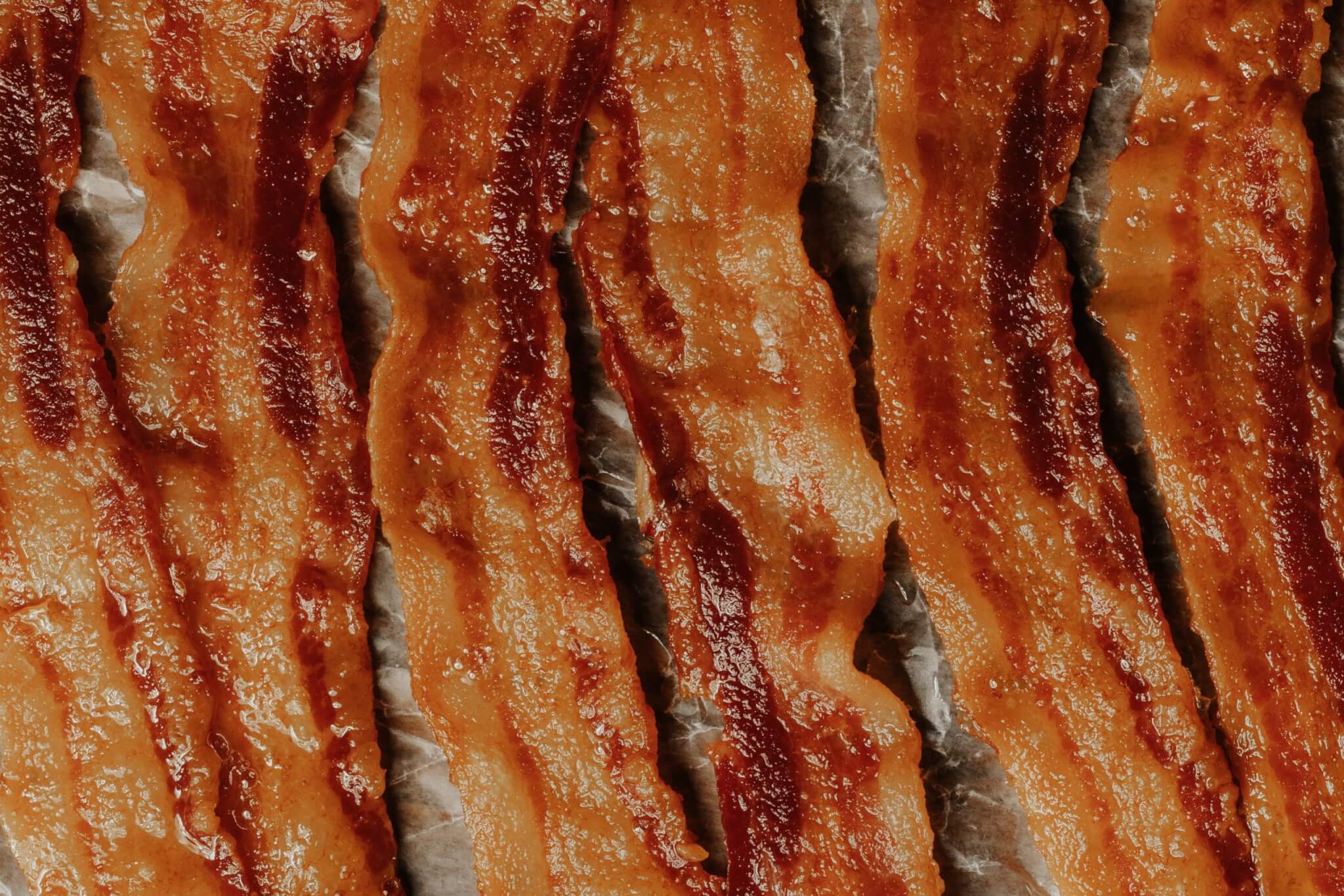
The List: Best Ways to Cook Bacon, According to Experts
1. Oven Method
Cooking bacon in the oven is easy, hands off, and can be perfect for large groups. “The oven method: Preheat your oven to 400°F and line a baking sheet with parchment paper. Lay the bacon slices out in a single layer on the sheet and bake for 15-20 minutes, or until the bacon is crispy to your liking,” says Chef Supply Co.
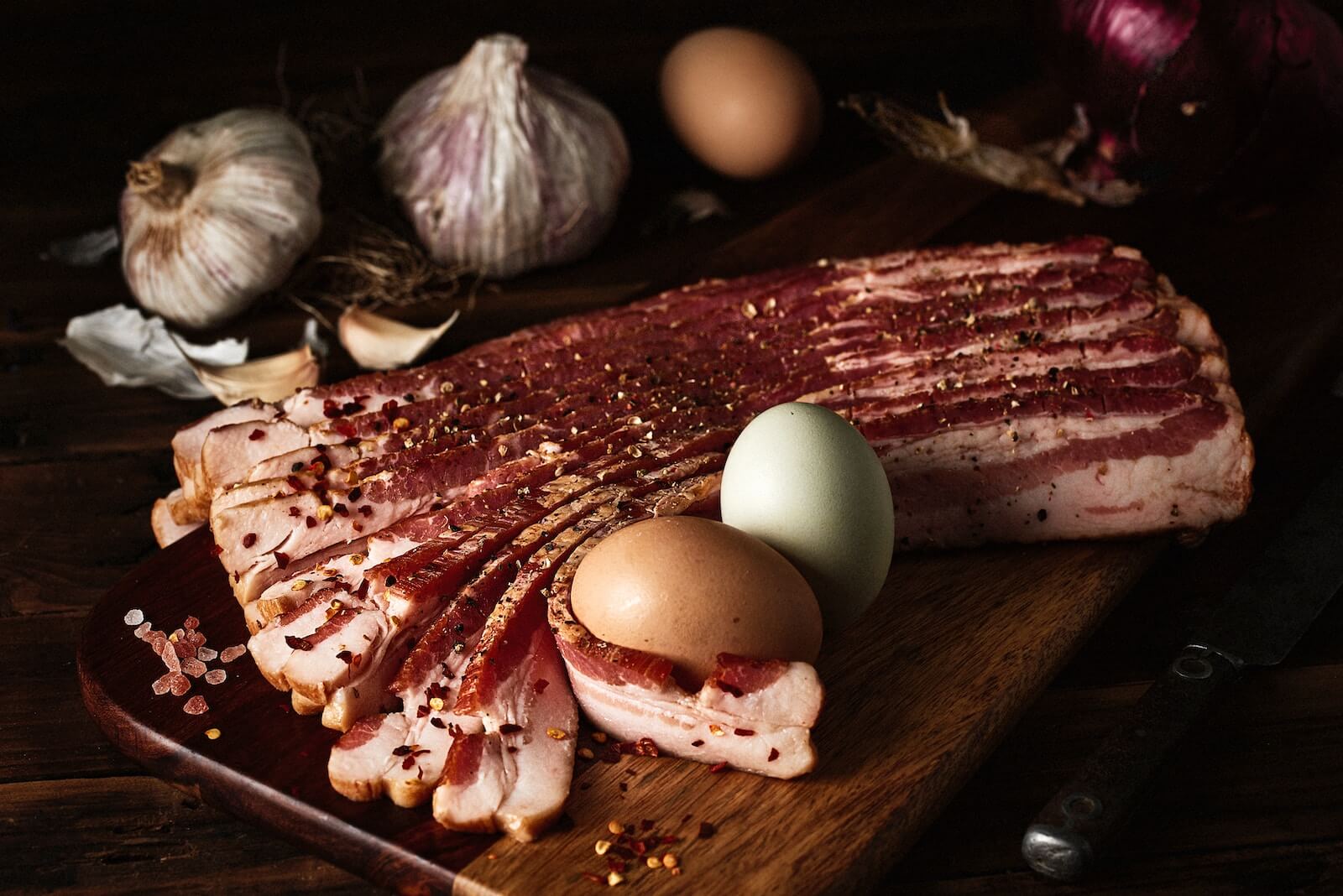
Oven cooked bacon is often considered easier to clean up as well. “Oven-Baked Bacon. A lot of people fully prefer oven-cooked bacon to pan fried. If I’m using bacon in a recipe, I’ll often cook it in the oven rather than the stove. For one, cooking bacon in the oven is a great way to get it crispy without all the added mess from grease splatter. A frying pan is more restrictive with size limitations, and you can cook a higher volume of bacon in the oven at once,” explains Restaurant Clicks.
In fact, one of the only down-sides of bacon in the oven is that it takes more time as compared to the other methods on our list. “Despite taking a little bit longer than the no-parchment method (about 22 minutes in the oven), this test resulted in equally delicious bacon with a nice chewy/crispy balance. It was curlier and more inconsistently crisped on its ends than the no-parchment batch…Cons: It took about five minutes longer to fully cook this batch of bacon than the batch we baked on a sheet pan sans parchment paper lining. Also, if your goal is flatter, more consistent bacon, you’d be better off baking without parchment paper,” advises Food 52.
2. Stovetop Method
Bacon in a frying pan is iconic, and it can make many consumers feel nostalgic for mom’s cooking. “If you’re a purist and prefer to cook your bacon on the stovetop, it’s essential that you use a nonstick pan. As Vanterpool explains, a nonstick skillet doesn’t require the use of oil or butter, so it will easily allow you to drain excess grease if you’re cooking bacon in several batches, and — as its name suggests — it prevents the bacon from sticking to the cooking surface. ‘It’s easier to control and handle when you need to flip the bacon,’ he says, ‘and it allows you to cook it more evenly.’ With this method, there’s no need to let your bacon come to room temperature before you begin cooking; however, the meat’s thickness will impact how hot you set your stovetop burner. ‘If it’s thick cut, you need to use a lower heat to start to allow the fat to slowly render out,’ Vanterpool says. ‘Then adjust the heat to medium-high. Just know that it’s going to take longer to crisp up'” says Golf.
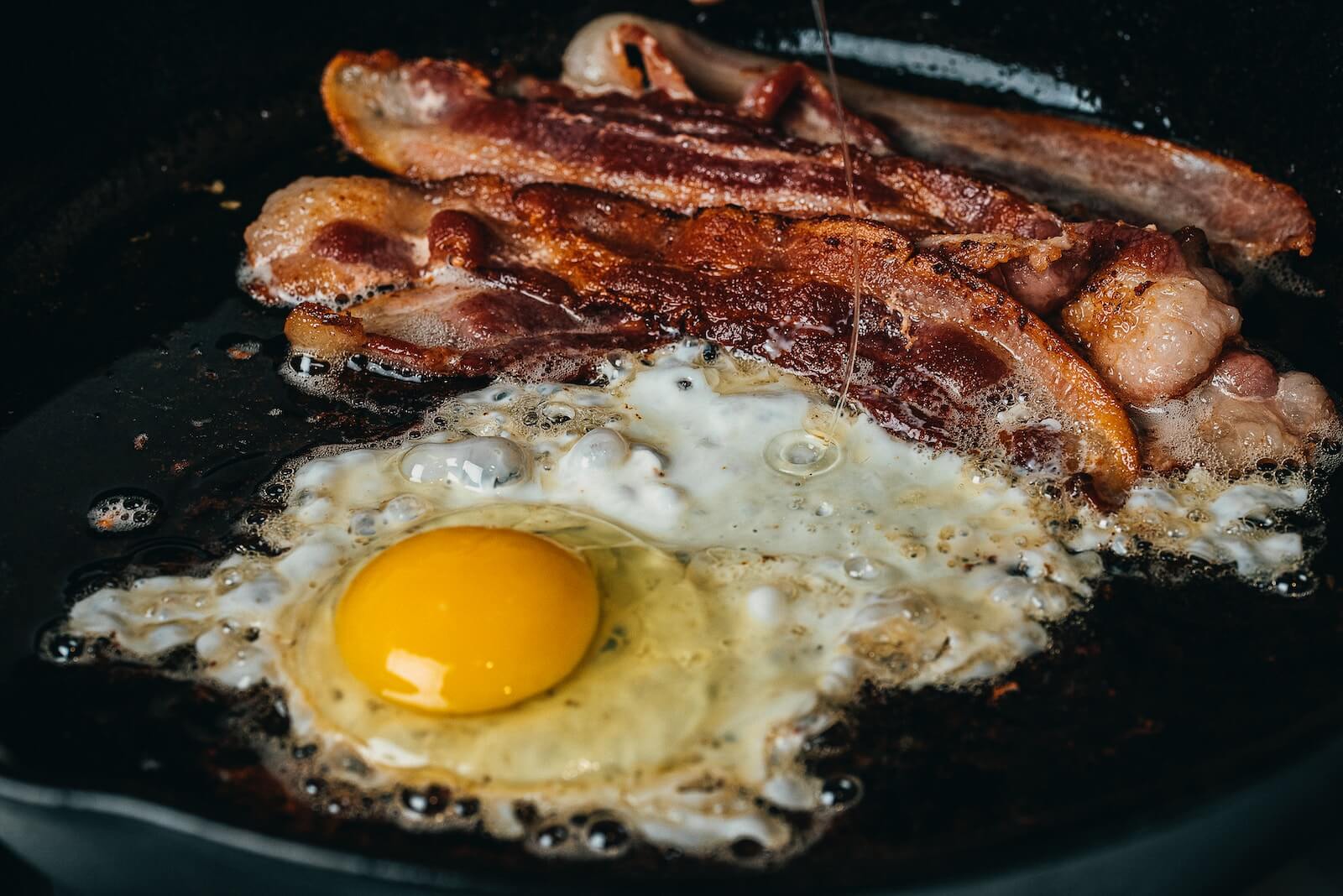
Frying up a pan of bacon might be messy, but it is worth the trouble. “A classic method for cooking bacon, this is probably how you remember your grandma cooking it! Though it’s not the easiest method in our opinion, it’s still a great way to cook bacon. And really, can you beat nostalgia? Place a single layer of bacon in a skillet and add a little water to the pan. (This helps stops grease splatters and pops!) Turn the heat on low-medium and let it cook, turning often until it’s cooked to your preference. Layer the cooked pieces on a paper towel or a brown paper bag to absorb the extra grease. And there you have it—classic stovetop bacon! We can hear the sizzle now. Be sure to grab yourself a good pair of tongs before you skillet fry bacon. This makes turning so much easier!” advises Shelf Cooking.
This method is also a good choice if you only need a few slices of bacon and you want them relatively quickly. “Arrange bacon in a single layer in a cold cast-iron skillet. Cook on medium-low. Turn bacon occasionally with tongs for even cooking. Cook to desired doneness. Drain on paper towels. Cook Time by Texture: Chewy: 12 min. Crisp-Chewy: 14:30 min. Crisp: 16 min,” mentions Taste of Home.
3. Grill Method
Camping bacon, cookout bacon, or bacon over coals are all ways that we love to cook bacon on the grill. “Flare-ups are a concern when cooking bacon on the grill since the slices can drip fat down onto the flames. To avoid this, we recommend cooking bacon in a cast-iron skillet ($30, Target) following the stovetop instructions above. Aim for a grill temperature of 400°F; cook with the lid closed, opening to flip the slices partway through the cooking time,” says Better Homes & Gardens.
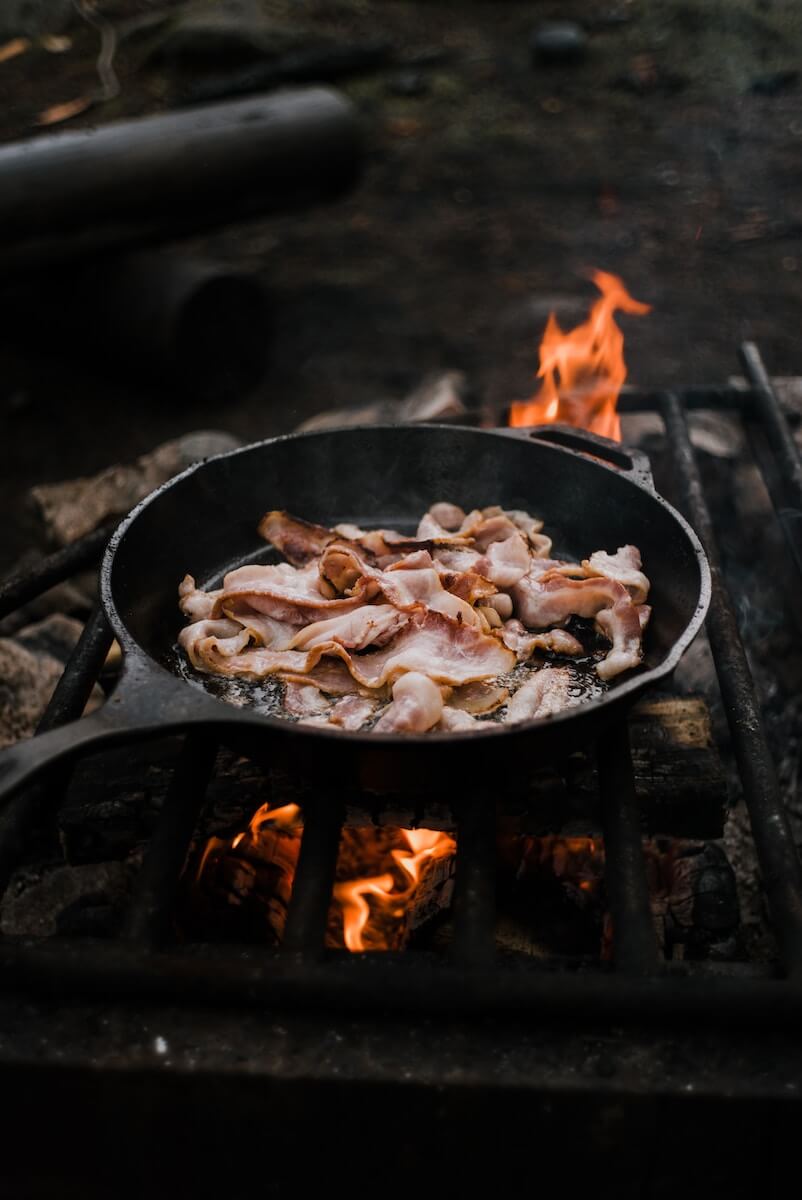
The appeal of grilling bacon is very real for enthusiasts of this method. “It’s a fantastic way to cook your bacon without heating up your house while infusing extra flavor from the grilling process. Plus, clean-up is a whole lot easier! But grilling bacon takes a bit more finesse than simply firing up the grill and tossing it over the grates… If you’re cooking with charcoal, light the briquettes and let them burn down. Once they’re pre-heated, spread them out along the bottom of one half of the grill. If desired, place a drip pan on the other side to keep things clean. If you’re using a gas grill, light all the burners while you allow the grill to preheat to about 400 degrees. Once it’s preheated, turn off one burner…Use a grill brush or a paper towel held by tongs to oil your grill grates with vegetable oil…To crisp it up at the end you may want to place it over the flames when it is nearly done to finish it. If you opt for this, keep a close eye on your bacon and never leave it unattended to avoid a grill fire,” mentions Hemplers.
For best results, would-be bacon grillers can take a few steps to prepare. “One easy way to cook bacon on a grill is by creating a large surface with aluminum foil. Place a large sheet of heavy duty aluminum foil directly on the grates and curve the edges upward about ½ inch to create a lip all the way around. Turn your grill on medium heat and place the bacon strips directly on the foil without overlapping. Cook to desired texture and place on paper towel lined plate when done. When cleaning up allow the grease to cool first in the aluminum foil so you can lift and discard with ease,” adds Publix.
4. Air Fryer Method
Many people love their air fryers and want to use them for everything. An air fryer is a convection oven that works by circulating hot air around the food. “For all the air fryer fanatics out there (yeah, we see you…) this bacon is going to knock your socks off! If you dig your bacon crispy, this may just become your go-to method. First, lay the bacon single layer inside the air fryer rack. Try not to overcrowd the rack. Next, air fry the bacon at 350°F for about 7 minutes. When done, check for desired crispiness and add 2-3 more minutes if needed. Transfer to a paper towel-lined plate to remove excess grease and devour! If air frying in batches, be sure to clean out the grease pan each time!” recommends Shelf Cooking.
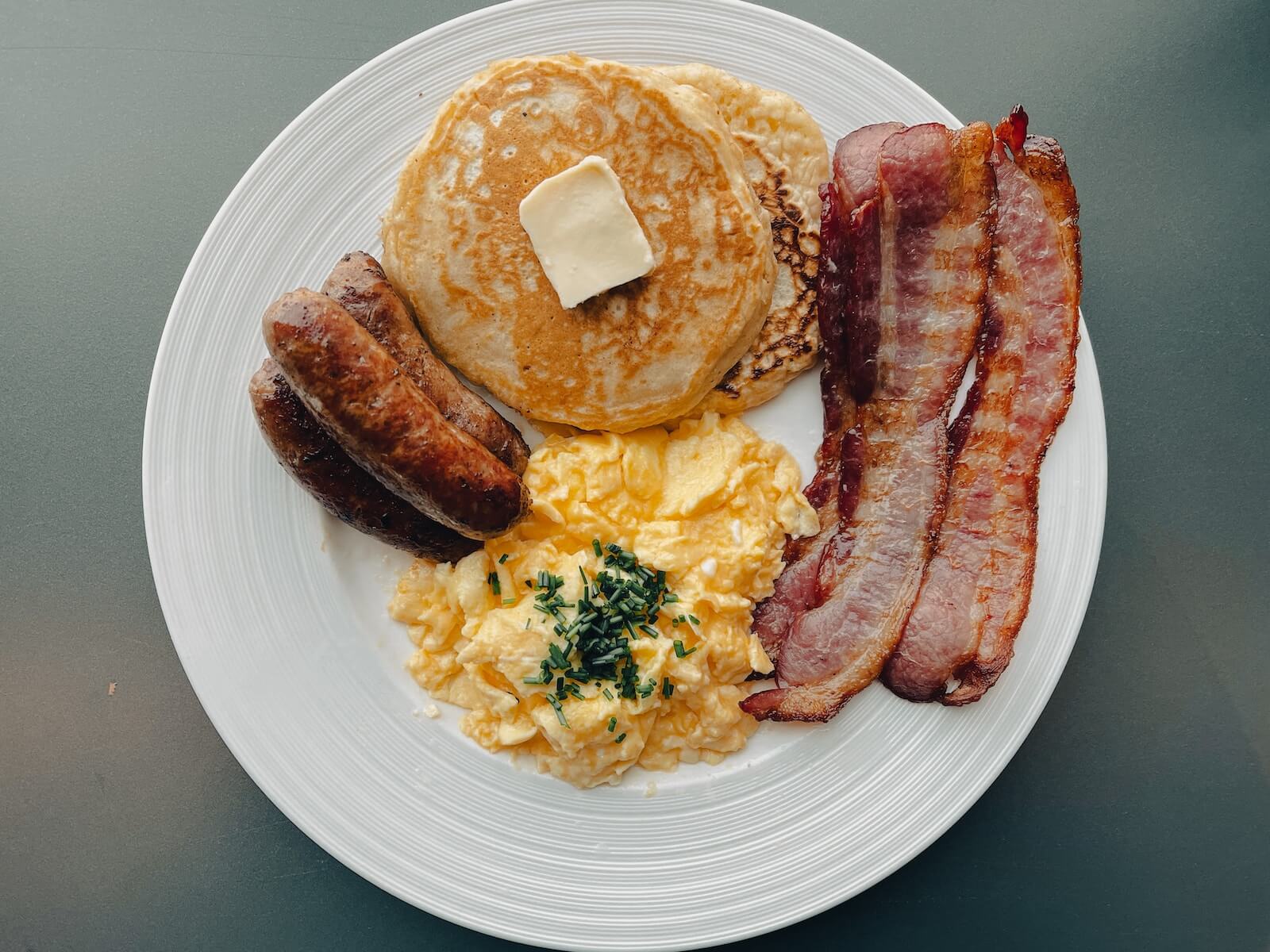
The trick to air frying bacon is to not over-fill the basket. “This method works well if a few things fall into play: You only need a few slices of bacon (depending on the size of your air fryer), you don’t care if the bacon curls up or doesn’t sit flat (especially in a smaller air fryer, you’ll likely have to fold the bacon to get it in), and you don’t mind pulling out your air fryer (or even keep it on your counter),” says Kitchn.
Adding to this, “Given that an air fryer is really just a convection oven, it should come as no surprise that cooking bacon in it is like using a hybrid of a traditional oven and a deep fryer. And like a deep fryer, an air fryer provides a foolproof medium for crispness” describes Golf.
5. Microwave Method
Some bacon lovers might cry out ‘sacrilege‘ when we bring up the microwave. Some would argue that this method destroys the drippings, making them unusable. However, for folks who need their bacon right now, the microwave can be a great choice. “This is quite possibly the quickest way to make a plateful of bacon. Line a microwave-safe plate with two paper towels. Place strips of bacon on paper towel without overlapping. Cover bacon with two more paper towels. Microwave for four to six minutes. Check every minute to avoid burning. The paper towels will absorb the grease and they will be ready to eat!” claims Publix.
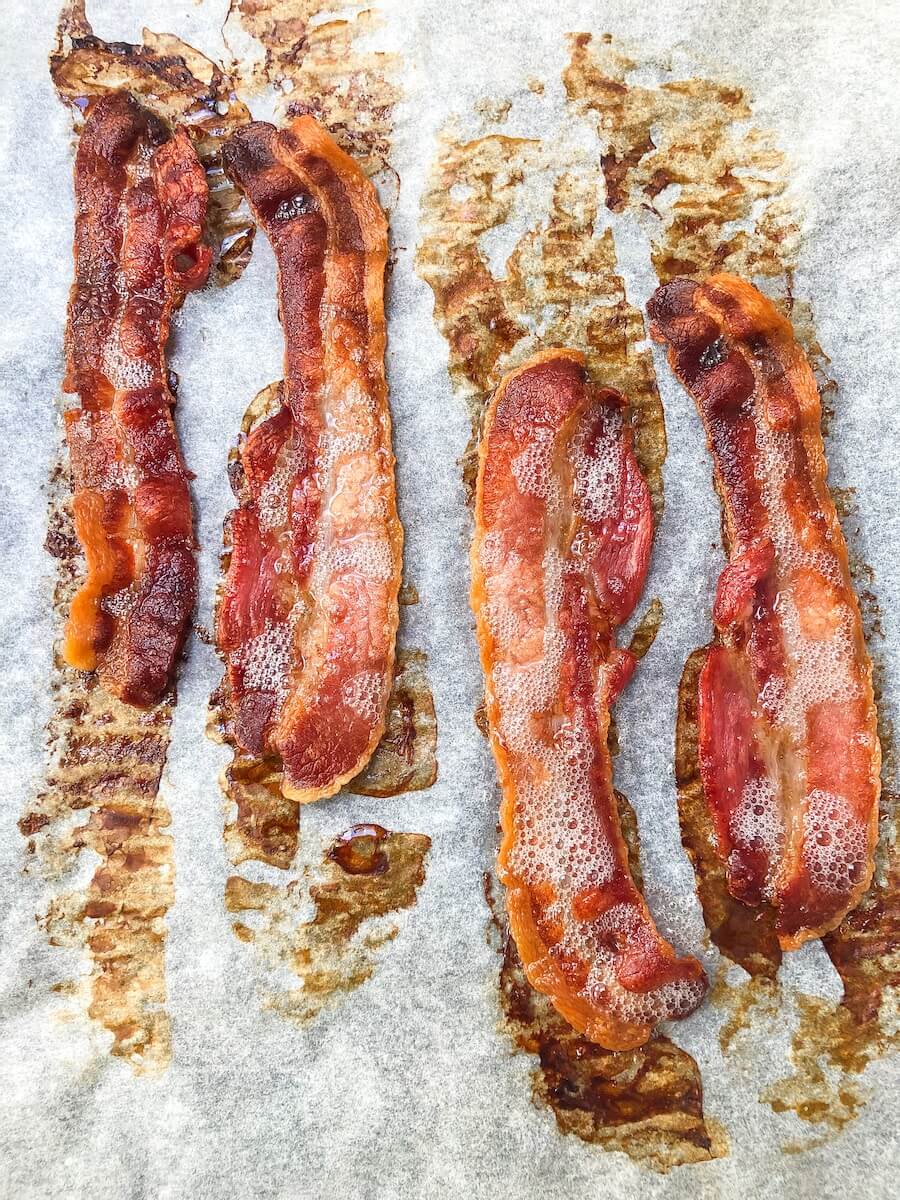
It’s not always for everyone, though: “We didn’t expect this one to be a great method, and we were right. We used a tray specifically made to cook bacon in the microwave and while it was supposed to only take a few minutes, we kept having to add time because it wasn’t done. All in all, it took 6 minutes and the bacon was dry, hard to chew, and lacked rich color. Even if you’re in a hurry, we really don’t recommend this method,” adds Hemplers.
Here are some additional details to get the best results should you decide to use the microwave. “Thick-cut slices fared better, yielding lovely crispy-fatty pockets — when I finally got the timing right. Cleanup was a breeze: I simply tossed the paper towels and loaded the plate into my dishwasher. Even though there were no splatters in my microwave, I still gave it a spray and rub-down because the walls had a light oily film on them. My Takeaway: I wouldn’t use this method again on regular-cut bacon. I could see this method being useful if you only need to cook a few slices of thick-cut bacon, and you need to cook them fast — but I like to save my bacon drippings for later use, and with this method the paper towels soak them all up. You’ll need to check the bacon for doneness about a minute or two before the indicated cook time, and then cook in increments of 10 to 15 seconds until you get the right texture. Basically, although this method is the fastest, it requires some finesse. Bottom line: OK for thick-cut bacon, if you’re in a hurry and don’t want the drippings,” recommends Kitchn.
You might also be interested in:
Sources
- Chef Supply Co
- Golf
- Restaurant Clicks
- Shelf Cooking
- Taste of Home
- Food 52
- Better Homes & Gardens
- Kitchn
- Hemplers
- Publix
Note: This article was not paid for nor sponsored. StudyFinds is not connected to nor partnered with any of the brands mentioned and receives no compensation for its recommendations.
